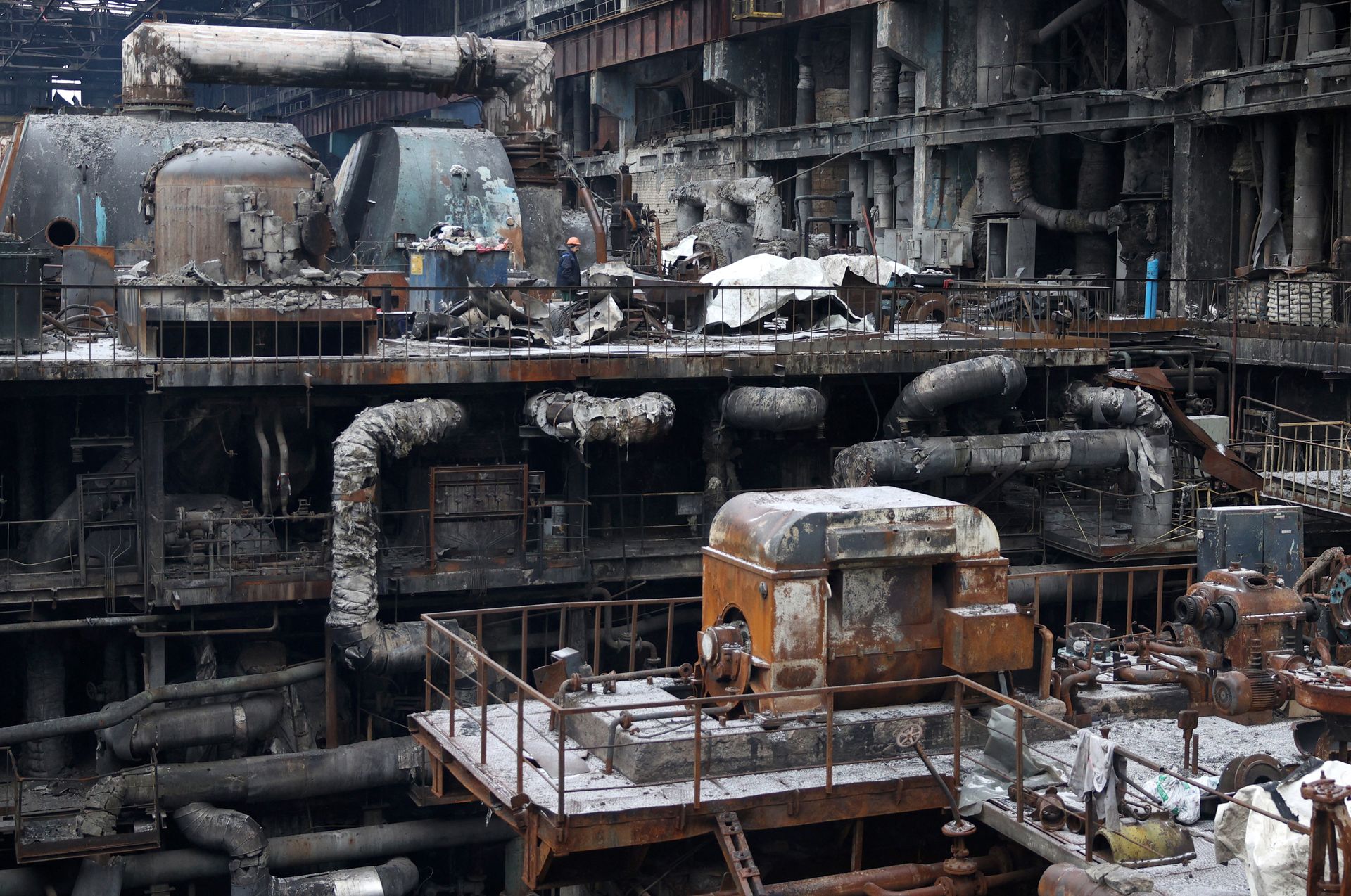OG Clean Fuels opens its largest refueling site in Europe – Mobility Plaza

Report on the Inauguration of OG Clean Fuels Facility in Malmö and its Contribution to Sustainable Development Goals
Executive Summary
OG Clean Fuels has inaugurated its largest European refueling facility in the Port of Malmö, Sweden. This strategic development significantly enhances the region’s sustainable transport infrastructure, directly supporting several United Nations Sustainable Development Goals (SDGs). The new station provides critical access to biofuels, including Bio-LNG and Bio-CNG, reinforcing the transition towards decarbonized logistics and cleaner mobility across Europe.
Alignment with Sustainable Development Goals (SDGs)
The establishment of the Malmö facility makes a direct and measurable contribution to the global sustainability agenda, with a particular focus on the following SDGs:
- SDG 7: Affordable and Clean Energy: The station expands access to cleaner energy sources for the transport sector by providing commercially viable biofuels. This initiative promotes the replacement of fossil fuels, contributing to a more sustainable energy mix for heavy-duty vehicles.
- SDG 9: Industry, Innovation, and Infrastructure: This facility represents a significant investment in resilient and sustainable infrastructure. It is an innovation tailored for the logistics industry, designed to support the modernization of freight transport and promote clean industrial practices.
- SDG 11: Sustainable Cities and Communities: Located in a key logistics hub, the station helps mitigate the environmental impact of freight operations on the city of Malmö. By enabling a shift to low-emission fuels, it contributes to reduced air pollution and supports the development of more sustainable urban and port communities.
- SDG 13: Climate Action: The core mission of the facility is to facilitate climate action by providing fuels that significantly lower greenhouse gas emissions. The availability of Bio-LNG and Bio-CNG empowers transport companies to actively participate in decarbonizing their fleets, a crucial step in combating climate change.
- SDG 17: Partnerships for the Goals: The expansion of the OG Clean Fuels network, which now includes 361 locations, exemplifies a commitment to building partnerships. This project strengthens the European network for clean fuels, fostering collaboration between industry, logistics operators, and port authorities to achieve shared sustainability objectives.
Facility Specifications and Operational Capacity
The Malmö station is engineered to meet the demands of modern, high-capacity freight transport. Its key features are designed to maximize efficiency and support the adoption of biofuels.
- Fuel Availability: The site is equipped with dedicated infrastructure for both liquid Bio-LNG (Liquefied Biogas) and compressed Bio-CNG (Compressed Biogas).
- Pumping Infrastructure: It features two fully operational Bio-LNG pumps and two Bio-CNG pumps, ensuring reliable service for a high volume of vehicles.
- Vehicle Accommodation: The facility includes five dedicated truck bays. Three of these bays are specifically designed to accommodate Longer and Heavier Vehicles (LHVs), catering to the needs of cross-border and high-capacity logistics.
Conclusion: Strengthening Europe’s Clean Mobility Network
The launch of the Malmö refueling station is a milestone in OG Clean Fuels’ strategy to accelerate the energy transition in European transport. As the largest site of its kind for the company, it serves as a critical node in a growing network dedicated to sustainable logistics. This investment not only provides essential infrastructure for today’s transport needs but also signals a strong commitment to advancing the Sustainable Development Goals by fostering a cleaner, more resilient, and decarbonized mobility ecosystem across the continent.
1. Which SDGs are addressed or connected to the issues highlighted in the article?
SDG 7: Affordable and Clean Energy
- The article focuses on the opening of a new refueling station for biofuels (Bio-LNG and Bio-CNG), which are presented as “clean fuels” and “renewable fuels.” This directly relates to increasing the availability and use of clean energy sources in the transport sector.
SDG 9: Industry, Innovation, and Infrastructure
- The core of the article is the announcement of new infrastructure—a large refueling location. This infrastructure is described as sustainable and designed to support the logistics industry’s transition to cleaner technologies, thus representing an upgrade to make the industry more sustainable.
SDG 11: Sustainable Cities and Communities
- The station is strategically located in the Port of Malmö, a key urban logistics hub. By providing “low-emission” fuel options, the initiative helps reduce the environmental impact of freight transport in and around the city, contributing to cleaner urban environments.
SDG 13: Climate Action
- The article explicitly states the goal is to support transport companies in “decarbonizing their fleets” and to “accelerate the energy transition in European mobility and logistics.” This directly addresses the need for action to combat climate change by reducing greenhouse gas emissions from the transport sector.
2. What specific targets under those SDGs can be identified based on the article’s content?
-
SDG 7: Affordable and Clean Energy
- Target 7.2: By 2030, increase substantially the share of renewable energy in the global energy mix. The article describes the expansion of access to “renewable fuels” like Bio-LNG and Bio-CNG, which directly contributes to increasing the share of renewable energy used in the transport sector.
-
SDG 9: Industry, Innovation, and Infrastructure
- Target 9.1: Develop quality, reliable, sustainable and resilient infrastructure. The new refueling station is a piece of “sustainable transport infrastructure” designed to be a “crucial link” in a European network, enhancing the reliability and sustainability of logistics.
- Target 9.4: By 2030, upgrade infrastructure and retrofit industries to make them sustainable…and greater adoption of clean and environmentally sound technologies. The facility is an infrastructure upgrade that enables the transport industry to adopt cleaner fuel technologies (biofuels) to “support the shift toward cleaner transportation.”
-
SDG 11: Sustainable Cities and Communities
- Target 11.6: By 2030, reduce the adverse per capita environmental impact of cities, including by paying special attention to air quality. The provision of “low-emission” fuels for heavy freight transport in Malmö aims to reduce pollution from vehicles, which would improve the city’s air quality.
-
SDG 13: Climate Action
- Target 13.2: Integrate climate change measures into national policies, strategies and planning. The company’s strategy to build a network for “decarbonizing their fleets” and “accelerating the energy transition” represents a corporate-level integration of climate action measures into its business planning, supporting broader European climate goals.
3. Are there any indicators mentioned or implied in the article that can be used to measure progress towards the identified targets?
-
For SDG 7 (Target 7.2):
- Indicator: The availability and type of renewable fuels. The article specifies that the station offers “liquid Bio-LNG and compressed Bio-CNG fuels,” which are tangible examples of increasing the supply of renewable energy for transport.
-
For SDG 9 (Targets 9.1 & 9.4):
- Indicator: The number and capacity of sustainable infrastructure units. The article provides specific numbers: the opening of the “largest refueling location in Europe,” its inclusion in a network of “361 locations,” and its capacity with “five truck bays” and four dedicated pumps for biofuels. These figures measure the growth of sustainable infrastructure.
-
For SDG 11 (Target 11.6):
- Indicator: The adoption of low-emission technology in urban transport. While not measuring air quality directly, the article implies progress by highlighting the provision of “low-emission” and “cleaner” fueling options specifically for freight transport, a major source of urban pollution. The use of these fuels by transport companies would be a measure of progress.
-
For SDG 13 (Target 13.2):
- Indicator: Implementation of corporate strategies for decarbonization. The article describes the new station as a “major milestone in the company’s strategy” and a “clear signal of the company’s ambition to expand access to renewable fuels.” The launch itself is an indicator of the execution of a corporate climate strategy.
4. Create a table with three columns titled ‘SDGs, Targets and Indicators” to present the findings from analyzing the article.
| SDGs | Targets | Indicators |
|---|---|---|
| SDG 7: Affordable and Clean Energy | 7.2: Increase substantially the share of renewable energy in the global energy mix. | The provision of specific renewable fuels (“liquid Bio-LNG and compressed Bio-CNG”) for the transport sector. |
| SDG 9: Industry, Innovation, and Infrastructure | 9.1: Develop quality, reliable, sustainable and resilient infrastructure.
9.4: Upgrade infrastructure and retrofit industries to make them sustainable…and adopt clean technologies. |
The number of clean refueling stations in the network (“361 locations”).
The capacity of the new infrastructure (“five truck bays,” “two Bio-CNG pumps and two Bio-LNG pumps”). |
| SDG 11: Sustainable Cities and Communities | 11.6: Reduce the adverse per capita environmental impact of cities, including by paying special attention to air quality. | The availability of “low-emission” fuel options for heavy freight transport operating within a key urban logistics hub (Port of Malmö). |
| SDG 13: Climate Action | 13.2: Integrate climate change measures into policies, strategies and planning. | The implementation of a corporate strategy to “accelerate the energy transition” and support the “decarbonizing” of transport fleets, evidenced by the opening of the new site. |
Source: mobilityplaza.org

What is Your Reaction?
 Like
0
Like
0
 Dislike
0
Dislike
0
 Love
0
Love
0
 Funny
0
Funny
0
 Angry
0
Angry
0
 Sad
0
Sad
0
 Wow
0
Wow
0












































































